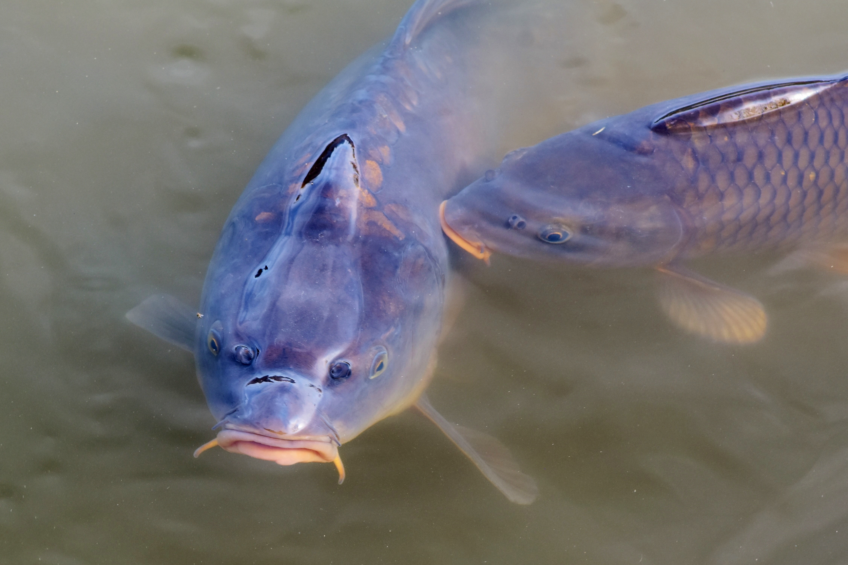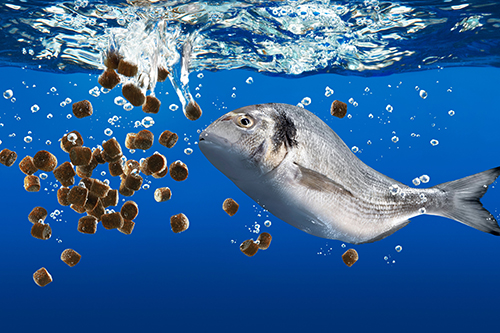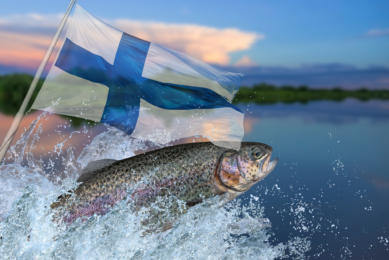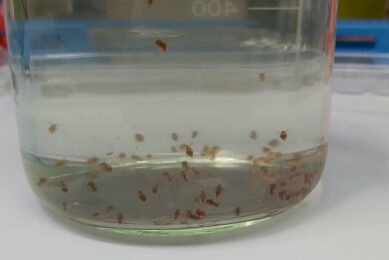The use of plant-based feed additives in common carp

The potential of plant-based feed additives has been well-established in several animal species. But what could be limiting their full potential in fish? In this recent study, researchers explored the benefits of plant-based feed additives in common carp (Cyprinus carpio).
The demand for fish protein sources from the ever-increasing human population is increasing while the harvest from capture fisheries (marine and freshwater) keeps declining. Reports show total commercial aquaculture feed production is expected to reach approximately 73 million tonnes by 2025. Common carp (C. carpio) are one of the largest consumers of compound feeds, consuming about 26.4% of the total global fish feed produced. In 2017 the estimated total production of ‘carp feeds’ globally was 13.6 million tonnes. On the other hand, the intensive culture of common carp to meet the high demand results in stress, leading to susceptibility to various pathogens, such as fungi, bacteria, viruses and parasites. Plant-based feed additives possess antimicrobial properties.
Researchers working on the current study sought a better understanding of the benefits and factors affecting the efficacy of plant-based feed additives (PFAs) in carp fish. Data was retrieved from experiments in 17 countries in various parts of the globe, giving a global overview of the application of PFAs in C. carpio aquaculture. This study aims to provide a quick guide to researchers and feed companies exploring the potential of PFAs in C. carpio aquaculture.

Characteristics of plant-based feed additives (PFAs) used in common carp
The chemical composition of plants and their associated bioactivities are dependent on geographical region or source, season and stage of maturity. To better understand the mechanisms of the additives and the repeatability of the experiments, information regarding chemical composition and molecular structures is important. However, in the current study, researchers found that a great proportion (87%) of studies did not report the chemical composition of the additives. Similarly, they found that 64%, 37%, 8% and 30% of studies did not record the parts of plants used as additives for essential oils, extracts, medicinal plants and spices, respectively. It is worth noting that some of the additives contained undesirable compounds, such as saponins, tannins and alkaloids, which are antinutritional factors (ANFs) and could be detrimental to the fish at high doses.
Effects of PFAs on common carp performance
Digestive enzyme activities are directly associated with growth performance in fish as they are responsible for the hydrolysis of protein, lipids and carbohydrates. Some PFAs contained coumarins, flavonoids, terpenoids and sugars which trigger amylase activity in fish. It was, however, revealed that not all PFAs can enhance the lipase and amylase activities of carp. For instance, higher doses of olive leaf (O. europaea) extract and Tilia tomentosa extract suppressed digestive enzyme activity.
Thyme (T. vulgaris), juniper berry (Juniperus communis), summer savoury (Satureja hortensis), Monterey cypress (Cupressus macrocarpa) and oregano were the major growth promoters (with a relative % increase greater than 20%) in the essential oils category. Additives with more than 50% growth promotion in the extracts category include lamb’s quarters, nutmeg, rosemary and Aloe vera. Litsea cubeba, oak (Q. aegilops), lemon (C. limon) and ferula (F. asafoetida) improved growth (using specific growth rate) by more than 50% in the medicinal plants category, whereas thyme, ginger and turmeric improved growth by more than 50% in the spices category.
Effects of PFAs on carp health
Most plants and their by-products are rich in terpenoid, polyphenolic, phenolic, alkaloid, quinone and polypeptide compounds. These compounds can also be classified under ANFs in fish nutrition. However, in small and purified or condensed doses, these compounds have immunomodulatory effects as they increase the antioxidant capacity as well as anti-inflammatory and antimicrobial capacities. Several essential oils, medicinal plants and spices influenced the immune system by stimulating the production of lysozyme and immunoglobulins. However, Aloe vera, Achillea millefolium, Mentha piperita, Echinacea purpurea, and oak (Q. aegilops) extracts had negative effects on the immunoglobulins of carps.
The researchers concluded that not all PFAs can protect carp against pathogens, so individual screening of PFAs is important. They, however, indicated that PFAs have great potential as alternatives to the use of antibiotics and chemicals in aquaculture.
Efficacy of plant-based feed additives
In this study, researchers also assessed factors that influence the efficacy of plant-based feed additives.
Inclusion rate
The inclusion rate of additives in the diets of C. carpio ranged between 0.04%–2%, 0.003%–8%, 0.01%–10% and 0.05%–5% for essential oils, extracts, medicinal plants and spices, respectively. In general, the inclusion of essential oils in carp diets within the range of 0.5%–0.75% was found to be economic, yielding the best growth and immune results, while inclusions below or above this range may be ineffective or detrimental. The recommended dose for extracts, medicinal plants and spices as PFAs for carp was set at 2%–4%, 2.5%–4.0% and 3%–5%, respectively.
Method of preparation of the PFAs
Comparative studies were recommended to ascertain the best method of preparation of PFAs for each plant species. As, for example, Thyme (T. vulgaris) as an essential oil with an inclusion rate of 1% and 2% improved growth (SGR) by 18.9% and 22.3%, while thyme as a spice with the same inclusion rate improved SGR by 42.7% and 25.57%, respectively (meta-data). Similarly, as different plant species have different chemical compositions depending on the location, season and maturity of the plant, the same PFA with differing origins may cause variabilities in response.
Mode of PFA addition to the diet
Direct mixing with the diet, soaking of the diet in additive solution and spraying were common methods by which the additives were included in the diets of C. carpio. There was limited data on the comparative effects of the different modes of addition of PFAs to carp diets. Researchers advised that “experimental confirmation of the effects of the different modes of addition of PFAs to carp’s diet is necessary as extrusion may interfere with the performance of PFAs.”
Conclusion
The use of plant-based feed additives in the diet of Common carp is a promising avenue for enhancing feed and nutrient utilisation, leading to improved growth and immunity. “While these plant-based feed additives are efficient in improving growth and immunity, it is essential to note that not all of them have a positive influence. Therefore establishing a threshold for their inclusion in the carp diet is necessary to maximise their benefits while minimising potential risks.”











